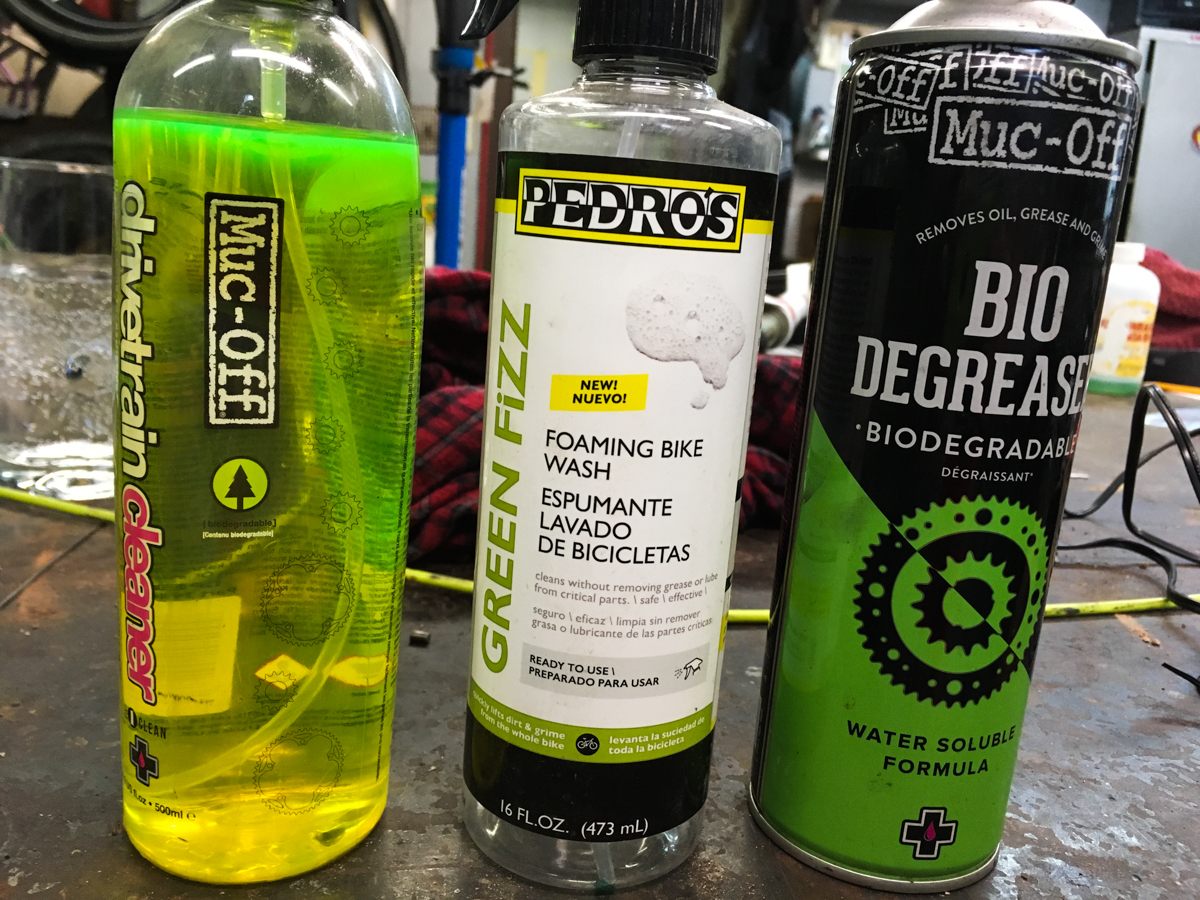How-To: Clean your bike properly
Originally posted on November 15, 2017 at 1:06 amRegardless of the time of year and riding conditions, every bike needs a good cleaning every now and then. We reached out to some experts for their advice on what to do, and what not to do.
People give all kinds of advice about what kind of products you can use—dish soap, automobile soap, etc. What is different about cleaning products for bicycles?
Matthew Bracken, Pedro’s: It’s easy to understand from a consumer point of view that people often confuse world class chemistry with household products used for cleaning or solutions to clean their automobiles. The fact is while some of the chemistry used to created detergents and degreasers for household and automotive use is found in bike formulas they are not the same. Like distant cousins their is related d.n.a. Involved but they are not identical.
Jason Bradwell, Muc-Off: A bike-specific cleaner has been designed to do just that – clean bikes. You can use it safe in the knowledge that your ride is protected from dangerous acids or chemicals. It is safe to use on all parts of the bike, including braking surfaces, like our pink Nano Tech Bike Cleaner. The best ones are also biodegradable, so you can use them whilst on the trail!

What about cleaning the greasy drivetrain? How is that different from dirt on the frame?
Bracken: Dirt is easy and with the right detergent and rinse after washing your frame, fork and components making your bicycles look shiny and clean. But, and this is the big BUT, detergent is not a degreaser. Detergents are designed to lift and pull dirt off surfaces. Detergents do not degrease. You can try all day long with any consumer brand detergent to degrease drivetrains on bicycles and you will end up extremely frustrated. When washing a bike the first thing we’d recommend if the drivetrain is filthy is to completely degrease the chain, cassette, chainrings, jockey wheels on the rear derailleur. Next we’d recommend a bicycle friendly detergent to wash your frame, fork, and wheels.
Bradwell: The muck you find on your chain is a combination of whatever you’ve picked up on the trail plus your lubricant, which is why it’ll typically be so greasy. A common mistake we see is riders putting too much lube on their chains pre-ride. This is a sure-fire way of attracting serious muck whilst on the trail and can cause damage in the long term.
What kind of brushes and gear do I need to clean my bike properly?
Bradwell: You could make do with an all-purpose soft brush if that’s all you have to hand; however, we recommend adding a few component-specific brushes to your collection to speed up the cleaning process. A claw brush with an integral scraper for mud de-clogging is a must-have for keeping your chain, cassette and sprockets in tip-top shape. We’d also recommended a detailing brush for reaching hard-to-shift dirt on sprockets, hubs and suspension mounts.
Bracken: You want to use brushes to scrub the drivetrain that are stiff, but pliable to get in and around all the places grease and oil are stuck on. For washing the frame and components a wider pail brush with softer bristles is fine. Be sure to only use the “clean” brushes with detergent on the frame, fork and other “clean” parts and to leave the stiffer brushes used for the drivetrain in a separate bucket with degreaser.

What are some of the cleaning techniques that you see or hear of people doing that they really should not do?
Bracken: Power washing or using high pressure water at the carwash is a bad idea if you are blasting the headset, bottom bracket or hubs. You are basically screwing the works up. Use the “shower” setting on your spray nozzle and spray sparingly and slowly with low pressure.
Bradwell: One of the worst is when people are cleaning their bikes outside and leave their sponges and/or cloths lying on the floor. There really is no quicker way to pick up grit and scratch your pristine chain. Leave it on a bike mat or in your cleaning bag! We’ve also seen some instances where riders have not paid attention to where they’ve applied polish or protectant sprays. These products typically have high-oil content, so it’s vital to avoid braking parts (e.g. discs and rims!) if you want to avoid riding head first into a tree.
What are some pro tips you have for a great cleaning?
Bradwell: Clean the dirtiest items first! This is typically your drivetrain and chain. Give your bike an all-over rinse before using any products. This will help loosen any debris or grit. The longer you can leave your lube to settle into your chain, the better. Our recommendation is 30 minutes minimum, overnight if possible. Make sure your chain is completely dry before applying lube. It’s vital you don’t seal water in with lube which leads to corrosion on the inner surfaces of the chain link.
Bracken: Don’t be afraid to DIY. It is unbelievable the number of people who are afraid to wash their own bikes in fear they will damage the bike or the components. A clean bike is a happy bike that will provide many miles of happiness. Love your bike and it will love you back. Maintenance is cheap versus the big fix.
What are some of your personal bike cleaning tips? Tell us in the comments!